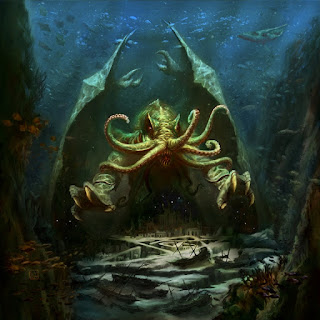 I’m 36 years old. I’m not saying that because I need
somebody to help me keep track until I reach AARP age, but because I want the
world to know how long it’s taken me to pick up a graphic novel. Until 30 Days
of Night, my only exposure to the art form was the TV versions of The Walking
Dead and Preacher.
I’m 36 years old. I’m not saying that because I need
somebody to help me keep track until I reach AARP age, but because I want the
world to know how long it’s taken me to pick up a graphic novel. Until 30 Days
of Night, my only exposure to the art form was the TV versions of The Walking
Dead and Preacher. Tuesday, November 29, 2016
30 Days of Night by Steve Niles
 I’m 36 years old. I’m not saying that because I need
somebody to help me keep track until I reach AARP age, but because I want the
world to know how long it’s taken me to pick up a graphic novel. Until 30 Days
of Night, my only exposure to the art form was the TV versions of The Walking
Dead and Preacher.
I’m 36 years old. I’m not saying that because I need
somebody to help me keep track until I reach AARP age, but because I want the
world to know how long it’s taken me to pick up a graphic novel. Until 30 Days
of Night, my only exposure to the art form was the TV versions of The Walking
Dead and Preacher. Friday, November 25, 2016
Relic, by Douglas Preston and Lincoln Child
Relic was one of the first books I remember reading as a kid. I read plenty others, before and definitely after, but it is one that stuck with me for nearly 20 years. I'll say that 15 year old me enjoyed the book, so it does hold a nostalgic place in my dark little heart.
What does 36 year old me think?
Yeah, I still like it.
But, it's not unqualified. There are issues with plot and pacing that did make the second half drag on. And then there's the worse epilogue I've ever seen this week.
Let's start with plot: A beast from South America comes to the New York Museum of Natural History and eats brains. Totally onboard so far. We go about halfway through the book watching scared scientists and cocky police make silly mistakes. I'm onboard with that, too: I love when hubris gets characters into hot water. There are some science-y things about this I take issue with, but I'm not a scientist so I don't know how valid my arguments are. The biggest is the creature's smell. Here is a creature that is an evolutionary marvel, with everything going for it to be the top of the food chain, but it gives itself away by being stinky. Seems to be a flaw that could be taken advantage of, especially since it needs lots and lots of brains to survive.
The pacing was good... Until it wasn't. It seemed like half the book was climax, and when we got to the payoff scene, it was fairly anticlimactic. Yes, Lincoln and Child cornered several groups with no way out to build tension, but when each group finally found a way to succeed, the conflict and tension lifted unceremoniously.
And then there was the epilogue. It took a good story with believable science and a good, believable monster, and kicked it all to the curb. I wish I had stopped at the end of the story and just left the epilogue alone. But sometimes I go against my best judgement.
Relic does introduce one of my favorite modern popular fiction characters: Agent A.X.L. Pendergast. He's a brilliant, Southern, Ivy League-educated FBI agent. When I look at Lincoln-Child books, I always check to see if it's a Pendergast Novel.
Overall, I though Relic was a solid read. No book is ever going to satisfy everybody, but this is one I can honestly say I can re-read once a decade... Hopefully I'll forget about the epilogue again.
Saturday, November 19, 2016
The Blob (1988), Directed by Chuck Russell
Sunday, November 13, 2016
The Outsider, Pickman's Model, and The Call of Cthulhu, by H.P. Lovecraft
 |
| Howard Phillips Lovecraft |
 |
| "I call it, "Bowl of Fruit on a Midsummer Morning." |
 |
Those Seaquest: DSV brats and their stupid dolphin
just can't leave well enough alone.
|
Sunday, November 6, 2016
Godzilla (2014)
 |
| It's almost exactly like this |

